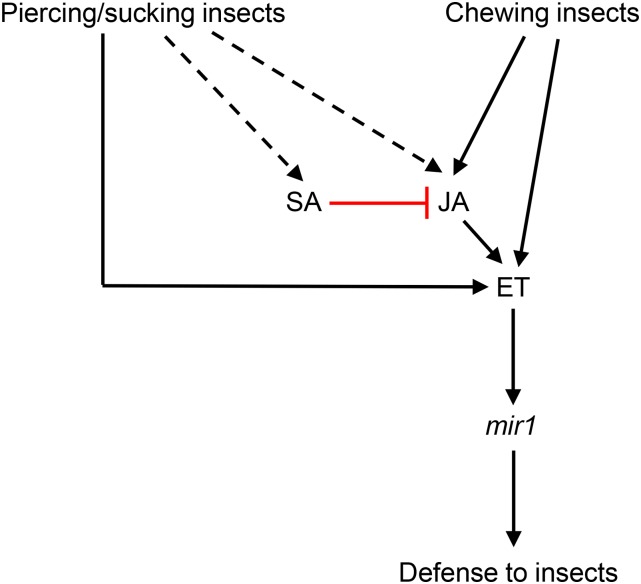Figure 7.
Model depicting the action of ET-dependent mir1-mediated defense to insect pests. Feeding by both piercing-sucking and chewing insects induce mir1 accumulation in Mp708 plants through different signaling mechanisms. Phloem sap-sucking insects rapidly induce the mir1 expression independent of JA but dependent on the ET-signaling pathway. Previous studies with chewing insects have demonstrated that JA acts upstream of ET in activating mir1-dependent defenses in maize. In addition, feeding by chewing insects activates the ET pathway independently of JA, thus contributing to mir1-mediated resistance in maize (Ankala et al., 2009). CLA feeding also induces the expression of SA and JA defense-related marker genes. However, pharmacological studies indicate that mir1-mediated enhanced resistance to maize is independent of both JA and SA pathways. Furthermore, plants that were pretreated with SA suppressed the mir1 expression, presumably through the inactivation of JA and/or JA-dependent signaling cascades. However, available evidence does not rule out the possibility of SA directly modulating the activity of ET. Nonetheless, our data clearly suggest that ET acts a central node for mir1-dependent resistance to different feeding guilds of insect pests. (Positive effects are denoted with black lines ending in arrows, constitutive expression is represented with broken black lines ending in arrows, and a red line that terminates with a perpendicular bar suggests a suppressive effect).

